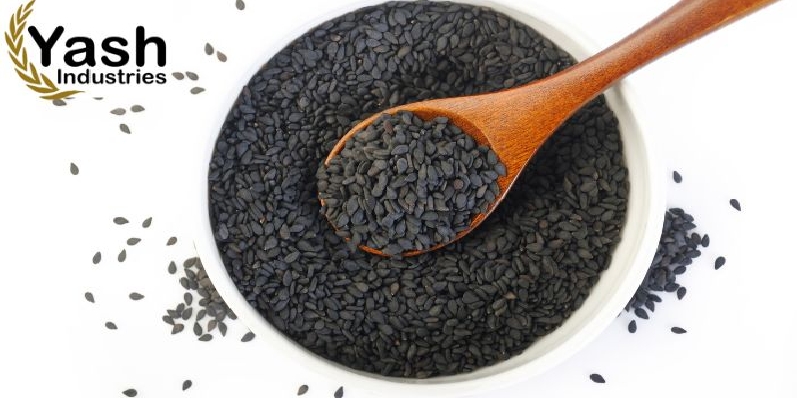
29-02-2024
Understanding Production Challenges and Agricultural Dynamics of Sesame Seeds Cost
- Admin
In the vast tapestry of agricultural commodities, sesame seeds cost stand out as a valuable crop with a rich history and a myriad of applications. From culinary delights to cosmetic formulations, sesame seeds cost play a pivotal role in various industries worldwide. However, behind their culinary and commercial allure lies a complex web of agricultural factors that influence the cost of sesame seed production. In this blog, we delve into the agricultural aspects of sesame seeds, exploring the intricacies of cultivation, production costs, and the challenges faced by farmers.
Cultivation and Geographic Distribution Of Sesame Seeds Cost
Sesame seeds, derived from the flowering sesame plant (Sesamum indicum), are predominantly grown in regions with warm climates and well-drained soils. Countries such as India, China, Sudan, Myanmar, and Ethiopia are among the leading producers of sesame seeds cost globally. Within these regions, variations in agro-climatic conditions, including temperature, rainfall, and soil fertility, influence the cultivation practices and productivity of sesame crops.
The cultivation of sesame seeds cost typically begins with land preparation, including soil tilling and fertilization, followed by seed sowing and irrigation. Depending on local practices and preferences, sesame seeds cost may be planted as a primary crop or intercropped with other crops such as sorghum, millet, or legumes. Throughout the growing season, farmers monitor plant health, manage pests and diseases, and apply necessary inputs such as fertilizers and pesticides to optimize yield and quality.
Production Costs and Input Expenditures Of Sesame Seeds Cost
The cost of sesame seed production encompasses various input expenditures incurred by farmers throughout the crop cycle. Key cost components include land preparation, seed acquisition, labor, irrigation, fertilizers, pesticides, machinery, and post-harvest handling. The intensity and magnitude of these costs vary depending on factors such as farm size, technology adoption, labor availability, and market conditions.
Land preparation involves activities such as plowing, harrowing, and leveling, which require machinery, fuel, and labor. Sesame seeds cost acquisition expenses encompass the procurement of high-quality seeds from reputable suppliers, ensuring genetic purity and germination potential. Labor costs include wages paid to farm workers for tasks such as planting, weeding, watering, and harvesting, which constitute a significant portion of production expenses, particularly in regions with labor-intensive farming practices.
Irrigation is essential for sesame seeds cost cultivation, especially in arid and semi-arid regions where rainfall is unreliable. Farmers invest in irrigation infrastructure such as wells, pumps, pipes, and drip or sprinkler systems to ensure adequate moisture levels throughout the growing season. Fertilizers, including nitrogen, phosphorus, and potassium, are applied to replenish soil nutrients and enhance crop growth, while pesticides are used to control weeds, insects, and diseases that threaten sesame seeds cost yields.
Challenges and Risk Factors Of Sesame Seeds Cost
Despite its economic potential, sesame seed production faces several challenges and risk factors that impact both yields and costs. One of the primary challenges is climate variability, including erratic rainfall patterns, droughts, floods, and temperature extremes, which can disrupt crop growth and productivity. Farmers in vulnerable regions must adopt resilient farming practices, such as water conservation techniques, drought-tolerant varieties, and crop diversification, to mitigate the impact of climate-related risks.
Pests and diseases pose another significant threat to sesame seeds cost crops, requiring proactive pest management strategies and timely intervention to prevent yield losses. Common pests affecting sesame seeds cost include aphids, caterpillars, thrips, and mites, while diseases such as root rot, leaf spot, and Fusarium wilt can reduce plant vigor and yield potential. Integrated pest management (IPM) approaches, including biological control, crop rotation, and resistant varieties, help farmers maintain pest populations at manageable levels while minimizing reliance on chemical pesticides.
Furthermore, market volatility and price fluctuations add uncertainty to sesame seeds cost production, affecting farmers' profitability and investment decisions. Fluctuations in global demand, trade policies, and currency exchange rates can impact sesame seeds cost, influencing farmers' income and input costs. To mitigate market risks, farmers may engage in forward contracts, crop insurance, and cooperative marketing arrangements to secure stable prices and market access.
Conclusion:
In conclusion, the agricultural aspects of sesame seeds cost production encompass a complex interplay of cultivation practices, input expenditures, challenges, and risk factors. Despite facing various challenges such as climate variability, pests, diseases, and market volatility, sesame seeds cost farmers employ adaptive strategies and innovative techniques to sustainably produce this valuable crop. By understanding the dynamics of sesame seeds cost production and addressing key challenges, stakeholders can promote agricultural resilience, enhance food security, and support the livelihoods of sesame seeds cost farmers worldwide.